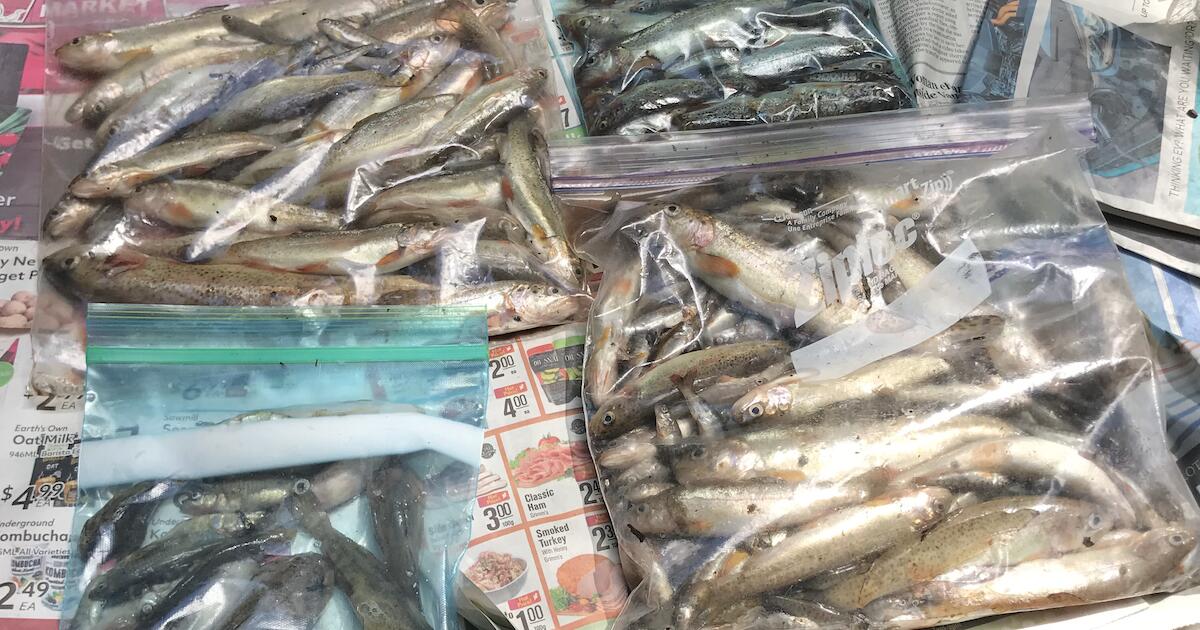
Tens of thousands of cars pass over Reay Creek everyday on their way to and from the Swartz Bay Ferry Terminal or Sidney and North Saanich. Most drivers and passengers don’t even know the creek is there, and what it represents.
Reay Creek is small but its representative of the perils most small streams in the populated Georgia Strait regions have to endure all too often. It’s important because its kilometer and a half length is a highly productive habitat for coho salmon and sea-run cutthroat trout. It’s really important because it shows that completely decimated streams can be rebuilt over time with the support of an entire community, and dedicated volunteers.
Reay Creek History
Forty years ago the Sidney Anglers Association started working on coho introduction to the creek. At that time it was so damaged there were no identifiable populations of salmon or trout, there was no summer water flow and there was precious little spawning gravel or suitable rearing habitat.
It had suffered extensive abuse, mainly from industry on the Victoria Airport, going back to the 1940’s. But a combined effort, including major support from the Victoria Airport Authority, North Saanich and Sidney, donations from the Sidney Anglers Salmon Enhancement Derby, the Salmonid Enhancement Program, the Pacific Salmon Foundation (PSF), and countless others groups over the years, turned this stream into a self-sustaining trout and salmon producer. Success hasn’t come without problems. There have been multiple kills over the years from known and unknown sources.
Ian Bruce
According to Peninsula Stream’s biologist Ian Bruce, “The issues due to airport industrial activity have been virtually eliminated, thanks to the commitment of the Airport Authority. However, an equally, if not more ominous threat comes from ignorance or indifference on the part of residential property owners. It appears that some see streams like Reay Creek as an easy disposal site for waste.” Grant McPherson reported, “Even a motorhome driver was seen stopping along the side of the road, and dumping toilet waste into a creek in nearby Central Saanich”. However both think “it’s even worse if people don’t pause to consider that toxic chemicals dumped down a perimeter or storm drain are going to end up in the creek that’s just yards away”. Ian says “it takes education but some people still don’t get it” and the consequences are severe.
2021 Reay Creek Tragedy
On June 4, 2021 the consequences visited Reay Creek. A kill was reported to the town of Sidney who got in touch with Ian Bruce. In short order a team of first responders including Bruce and the Sidney Anglers Grant McPherson were on sight collecting samples, assessing the damage and contacting the key government authorities. This type of fast action is invaluable because the government agency response time varies if resources aren’t available.
First Responders Collecting Dead Fish Samples (Photo courtesy Keith Chancellor)
The Damage is Significant
The responders collected more than 400 dead sea-run cutthroat, representing three age classes, over just a few hundred meters of stream. Other fish species like sculpin and stickleback were also decimated, along with some coho fry and smolts. Fortunately, most of the coho smolts had already gone to sea, according to Grant McPherson. There was also significant damage to the stream’s natural food production system that could take years to recover. Collateral damage may also have been done to birds and other predators, as a number of dead fish showed signs that something had been eating them.
Collecting and Recording Dead Fish (Photo courtesy Keith Chancellor)
In this case quick action facilitated uncovering critical information. It also proved the value of having citizens directly involved in stream restoration. This is what is known to date.
- The source contaminant (toxic chemical) appears to be bleach
- The location of the source drain has been identified
- The source of contaminant has been traced back to a residence
Source Drain of Contaminant (Photo courtesy Keith Chancellor)
Will Charges Ensue?
Now, the question is this: Will the regulating agencies charge the individual(s) or not? McPherson is unequivocal. “It’s time to lower the boom on this type of activity”. Bruce added “The Environment Ministry should do some face to face education in the community”.
Reay Creek is well known to residents who have their own small stewardship committee. Member William Collins called it, “A hard lesson for the neighborhood to learn”. According to Ian Bruce one responsible resident, who had moss removed from his roof by an environmentally friendly company on the same day as the kill, was worried that the removal had caused it. He contacted the all the right people and assures that the normal process of follow up will be undertaken.
McPherson provided this advice for people who live or work near small streams:
-
-
- Use environmentally safe products
- Understand where your drains go
- Wash vehicles on lawns not the pavement
- Ensure workers on your property use “green” products
- Read the instructions for using chemicals
- Dispose of chemicals at accredited locations
- If you are unsure it should go down a drain don’t put it down a drain
- Use chemical neutralizers for hot tub and pool water before draining them
-
3 Comments
Leave A Comment
Visit the Store
$34.99
$34.99
Featured Catch
Joel Unickow halibut (Photo: Rob Frawley Lucky Strike Sportfishing Tofino)





I’m certain the laws are already in place. Make an example of this clown. “Lower the boom”
Ban bleach in the community. products like 30 seconds are nearly all bleach.
I can see where car and truck washing could be a problem locally here in my community.
I hope the persons responsable are made aware of this tragedy.
Sidney has worked so hard for Reay Creek to be clean and healthy. We the community have to hold up our end.